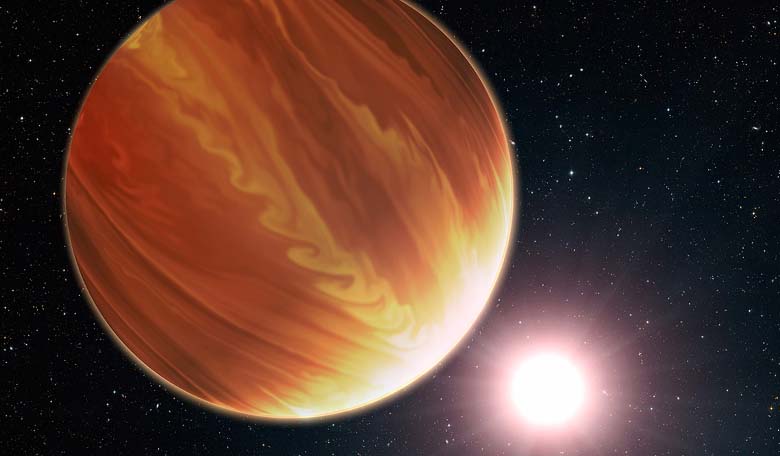With the numbers of newly discovered exoplanets steadily increasing, the interest in understanding just how habitable these far-off worlds could be is also of great significance to scientists. Now researchers in America are suggesting that sulphur photochemistry, more so than carbon, could play an important role on planets where the incident UV flux from the host star is high.
It is known that photochemical hazes are widespread in the solar system and despite recent transit observations of exoplanets suggesting that a wide prevalence of haze/cloud layers at high altitudes is possible, hazes have yet to be conclusively detected. Similar hazes are found on Earth, but they are known as smogs and are often associated with air pollution from vehicular emission (think Los Angeles, Dehli and Beijing).
Past studies of exoplanet atmosphere’s have concentrated on hydrocarbons and nitriles as the main compound in photochemical hazes, especially on warm sub-Neptune type worlds, but a lack of observed methane (CH4) on such planets has hindered this line of investigation. Not only that, but the first exoplanet photochemical models of hot Jupiters, showed that small hydrocarbons would not condense in their solar composition atmospheres, adding weight to the hypothesis that perhaps a smaller chain of molecules could be responsible for the photochemical production of organic hazes.
By comparing available spectral and photometric data with spectral models of a planet known as 51 Eri b, a young planet twice the mass of Jupiter, analysis strongly suggest that clouds, possibly patchy ones, are present in its cool atmosphere. However for an object as cool as 700 K, the origin of the cloud coverage has been somewhat puzzling to scientists. 51 Eri b orbits 51 Eridani, a pre-main-sequence F dwarf that is only 20 million years old and as a young star, it bathes its fledgling planets in amongst other things, UV radiation. Accordingly, the UV irradiation of 51 Eri b is high, about twice what it is at Earth today, or about 200 times what it is at Titan. As similar studies have suggested, carbon monoxide is expected to be abundant in its atmosphere, however this cannot be substantiated with current data. Global clouds of iron and silicate have also been postulated as a possibility, but these are expected to have sunk well below the photosphere by the low temperature of the planet.
Now, a team of researchers based in the US have used 1D chemical kinetic models to analyse whether, and under what conditions, photochemical hazes are likely to form in the atmosphere of 51 Eri b and have found that while the initial idea was to use C4H2 as the starting point for chemical reactions, sulphur atoms proved a more viable method in which to explain the hazes.
The team found that most of their models predict that a major product of sulfur photolysis is S8 – a chain of eight sulphur atoms – and that while small sulfur-bearing molecules were rather easily photolysed, S8 sulphur rings were more stable to UV radiation than the hydrocarbon chains they also modelled. In addition for their cooler temperature models, S8 is predicted to condense in optically thick clouds of solid sulphur particles. Conversely, in their warmer models S8 remains a vapour along with several other sulphur allotropes that are potentially observable. As such, the team state that a good case can be made for the presence of photochemical sulphur clouds in the atmosphere of 51 Eri b.
The team also state that their modelled sulphur chemistry could be applicable to a wide variety of worlds over a broad temperature range and that even for planets where the UV irradiation is orders of magnitude weaker than it is on 51 Eri b, products of sulfur photochemistry will be nearly as abundant.
From the sulphur isotopic record in Archean sediments on Earth, there is strong circumstantial evidence that precipitation of elemental sulphur was prevalent in Earth’s early atmosphere, long before oxygen became commonplace. The role of sulphur chemistry is very poorly known therefore this research highlights just how important sulphur might be as a major constituent in exoplanet atmospheres.
For further information on this research, please see http://arxiv.org/pdf/1604.07388.pdf











